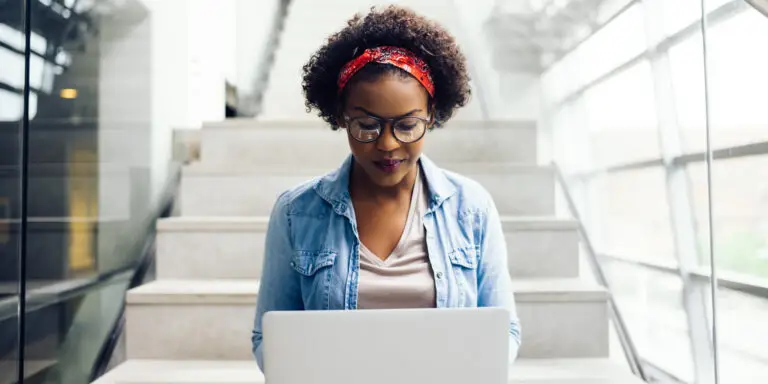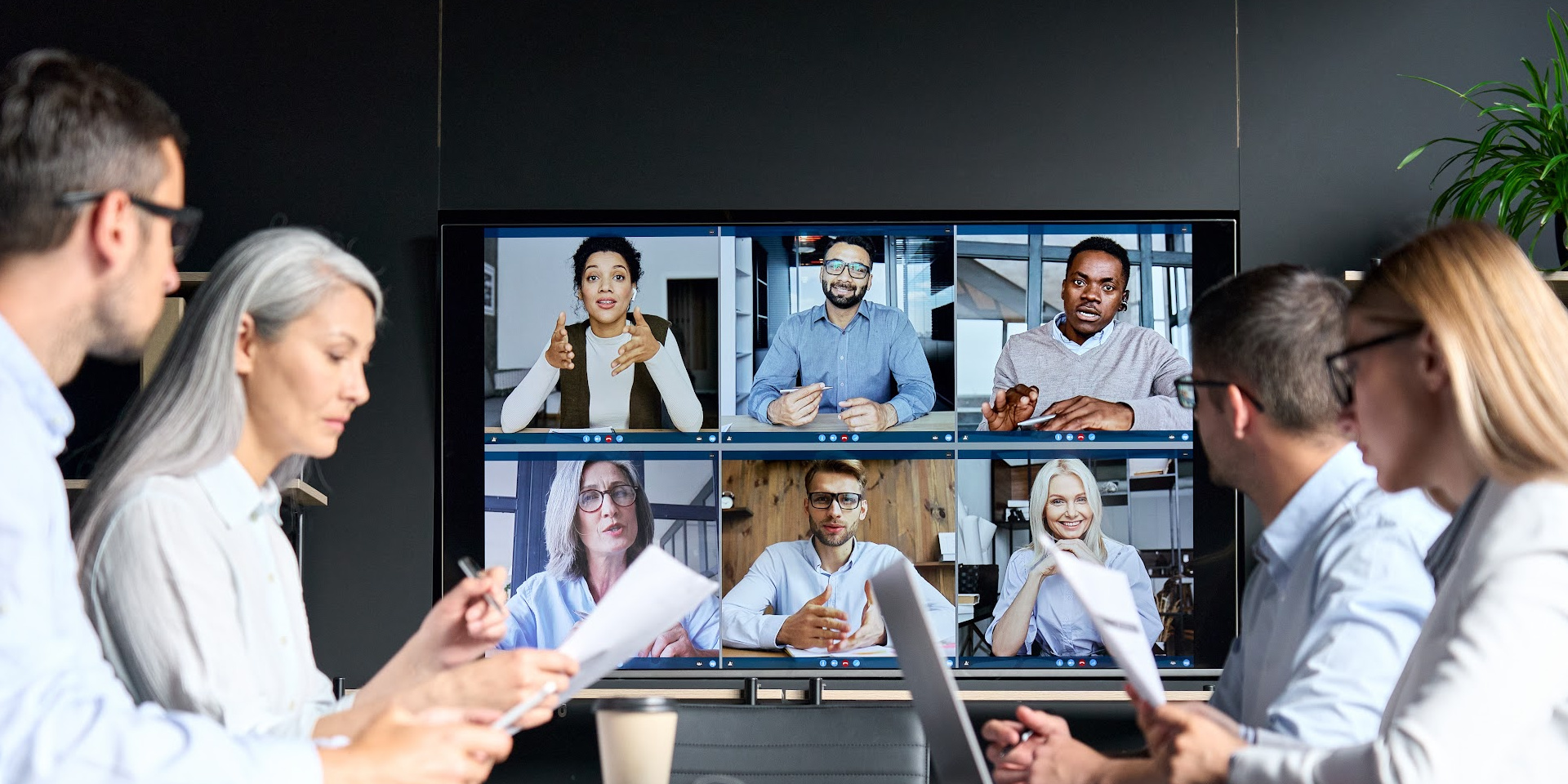The topic of returning to the office has resurfaced in the media cycle, as Google announced last week an RTO crackdown: Return to the office or face consequences.
While Google is just one company resorting to forced action to bring people back together, its notorious reputation as a socially innovative organization highlights a systemic issue faced by today’s leading organizations.
Is physical proximity truly the solution to the problem of the Disconnected Workplace?
There is deeper work to be done within the social dimensions of work. This article will address the social causes of disconnection, while exploring how to leverage multidimensional factors to bring a workforce back together.

What is the Disconnected Workplace?
Higher Playbook defines the Disconnected Workplace as the sociological divide that exists within modern organizations and the individuals who operate them.
According to the Oxford definition, an organization is an organized body of people with a particular purpose, especially a business, society, or association.
Though in modern organizations, this shared purpose can be easier said than done.
Lack of touchpoints in a workplace experience can lead to a breakdown in culture.
There is not adequate time and space dedicated to building workplace relationships, fostering mutual understanding, discovering each other’s talents, and engaging in meaningful collaboration.
Professionals within a Disconnected Workplace often feel detached, isolated, and without a sense of belonging in the workplace. They may feel this disconnection within themselves, with their colleagues, and with the organization as a whole.
The Disconnected Workplace won’t be resolved until the beliefs and behaviors of people across the organization match the shared purpose and missions they stand for.
Connectivity Beyond Geography
While return to the office may be a quick fix, we need to challenge this notion to innovate for a global workforce.
Bridging this embodiment gap starts with strengthening connectivity amongst people at work by leveraging the social dimensions of the workplace.

Exploring the following 6 dimensions of social connectivity will address the sources of the Disconnected Workplace and shed light on how to build a connected workplace experience.
Relational: How Do People Interact with Each Other?
Disconnection in the workplace often arises from a lack of relationships and relational awareness.
When people only know each other based on their roles and responsibilities, they tend to engage in transactional exchanges that lack the authenticity and consideration found in long-term, committed relationships.
Building genuine workplace relationships requires both leaders and employees to go beyond treating each other as cogs in a wheel, and instead, shift to forging emotional bonds.
Cultivating deeper connection involves engaging in conversations that go beyond work-related topics and learning about each other as human beings. Such conversations can improve understanding, enhance morale, and inspire new levels of collaboration.
These human-centric conversations can improve understanding, enhance morale, and inspire new levels of collaboration.
Psychological: How Supported and Safe Do People Feel At Work?
Mental health in the workplace affects nearly everyone, with a recent Forbes article stating that 92% of employees experience mental health challenges that impact their work.
While professional life comes with its fair share of mental health challenges, strict compliance standards like the RTO mandates can have adverse effects on employee well-being.
In contrast, organizations who understand the psychological aspects of workplace connection proactively shape psychologically safe workplaces.
By offering accessible resources such as coaching and mental health benefits, as well as implementing compassionate policies like unlimited PTO and work-from-home options, these organizations create an atmosphere where individuals feel connected on a psychological level.

Individual: How Can Each Person Play A Unique Part?
Each employee brings a distinct set of experiences, strengths, values, and expectations to the workplace, making their individuality an essential aspect.
However, in highly standardized workplace environments, identifying and appreciating these individual differentiators can be challenging.
While standardization historically offered a method for scalability, it can clash with the need for personalization.
A return to personalization is paramount to ensuring that diverse populations of people feel seen, heard, and valued at work. Employees desire opportunities to explore their individual purpose, discover their talents, grow their skills, and contribute in meaningful ways.
Organizations can promote individuality within their workforce by initiating special projects that allow individuals the freedom to experiment with new approaches and open up space to celebrate diversity of thinking.
Philosophical: How Are People Embodying The Organizational Values?
Companies with impactful missions have a significant responsibility to embody their values.
Since alignment between organizational behaviors and stated values is observed implicitly, it can present a very real reputation risk for today’s organizations, particularly when leaders’ actions and words don’t measure up.
Employees can feel disillusioned, disengaged and disconnected by these discrepancies. Discontent then gets reflected in how employees represent the brand and speak about their employer.
Culture plays a pivotal role in aligning a workforce with its values and creating accountability to ethical behaviors.
Culture plays a pivotal role in aligning a workforce with its values and creating accountability to ethical behaviors. Leaders and employees can come together to cultivate a shared cultural ethos and learn how to model conscious behaviors.
At Higher Playbook, our culture activations bring people together to explore their collective belief systems. This exploration of implicit beliefs helps to foster 360 awareness and initiate behavioral changes necessary to bridge the gap between values and actions.
Existential: How Can People Experience Fulfillment At Work?
Work is no longer solely viewed as a means to earn a paycheck; it has become a means to find a purpose.
Employees seek answers to existential questions related to their work: Where is my career headed? Who am I becoming? What is my legacy?
Organizations that understand the existential drivers invest in initiatives that empower employees to appreciate the impact of their work.
Personal and professional development are merging together in workplace programs, like Purpose Projects and Impact Projects.

By investing in human development, companies can cultivate a sense of meaning for a workforce that deeply desires purpose.
Ultimately, employees who feel that their company invests in them are more willing to reciprocate through their work.
Societal: How Can People Contribute to a Cause Greater Than Themselves?
People aspire not only to work for great organizations; they want to make a contribution to society. Businesses, along with the rising generation of leaders, are dedicating themselves toward solving larger humanitarian and environmental crises.
7 out of 10 employees have a desire for their job to create a societal impact. Edelman 2022 Trust Barometer
The Sustainable Development Goals (SDGs) illustrate how organizations and their employees can work together in addressing systemic issues, both within and outside the workplace.
Companies that acknowledge the broader societal context of work understand that the boundaries of a physical workplace should not confine the expansive impact of their workforce.
Whether employees are working remotely or in-office, the reality is people feel socially connected when they get to contribute to a cause greater than themselves.
How to Build an Interconnected Workplace
While returning to the office may bring people into physical proximity, reconnecting people and culture means calls for a greater aspiration: the Interconnected Workplace.
In the Interconnected Workplace, connection flourishes through meaningful relationships, psychological safety, individual recognition, values alignment, existential fulfillment, and societal contribution.
Implementing culture programs is a powerful starting point for the deeper work essential to building an Interconnected Workplace, where stakeholders get to deepen their connection to themselves, each other, and the world.
Now is the time to adapt to the evolving landscape of work by creating a higher standard for the workplace experience.
By transcending geography and innovating for connectivity, we can create a true sense of place for people at work.
For organizational leaders responsible for L&D in your workplace, Higher Playbook is your strategic partner in designing and developing socially innovative culture programs. Book a culture consultation now.












